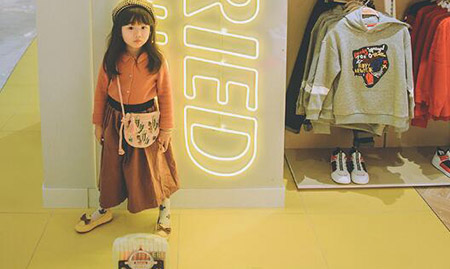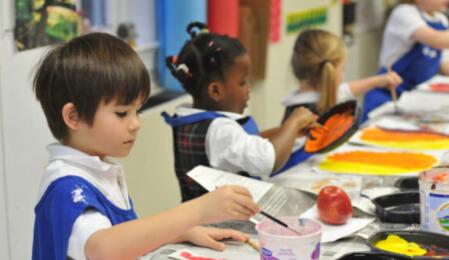许多人看到大段大段的英文就会发生一种惊骇感,因而在咱们菜鸟教程中,首要意图就是协助我们消除这种惊骇感。咱们先来一段简略的:
For most people,the word “fashion”means“clothes”。 But people may ask the question,“What clothes are in fashion?”And they use the adjective“fashionable” in the same way:“She was wearing a fashionable coat. His shirt was really a fashionable colour.”
But of course there are fashions in many things,not only in clothes. There are fashions in holidays,in restaurants,in filmsand books. There are even fashions in school subjects,jobs…and in languages.
Fashions change as time goes. If you look at pictures of people or things from the past,you will see that fashions have always changed. An English house of 1750 was different from one of 1650. A fashionable man in 1780 looked very different from his grandson in 1860.

Today fashions change very quickly. Some of this is natural. We hear about things much more quickly than in the past. Newspaper,radios,telephones and television send information from one country to another in a few hours. Newfashions mean that people will buy new things,so you see there is money in fashion.
这段话不难,咱们来逐句说明一下。
① For most people,the word “fashion”means“clothes”。② But people may ask the question,“What clothes are in fashion?”③And they use the adjective
“fashionable” in the same way:“She was wearing a fashionable coat. ④His shirt was really a fashionable colour.”
① For呈如今最初一般来说是关于,这个咱们现已讲过;word是单词,它和world(世界)是形近词,菜鸟别弄混了;标红的means有“办法、办法;意味着”的意思,在这儿显着是“意味着”。Means的形近词是mean,这个单词有“意思是。。。;小气,尖刻;均匀数”三个意思,费事同学们把这三个意思都记住了。
② 最初的but标明转机,这也是英语文章中常见的办法转机的办法,一般but后边的是整篇文章的要点。Adjective是描述的意思,咱们英语中描述词的简写“adj”的全拼就是这个单词。
③ 最初的and阐明跟前面的一句话表他相同的意思,在英语中,and之间的两个语句就跟对联相同规整。比方这句和第二句。But对and;people对there;ask对use;the question对the adjective。
④ Really标明真实的意思,归于描述词。这儿教给我们一个诀窍,但凡词语后边带“ly”的根柢都是描述词,描述词假定看不理解可不翻译,直接了解为“非常”就可以。
全文翻译:对大大都人来说,“时髦”一词的意思是“衣裳”。但我们可以会问,“啥衣裳是时髦的?”他们用描述词“时髦”的方法是:?┐饕患摈值耐馓住K某囊抡媸且恢质摈值难丈!?
① But of course there are fashions in many things,not only in clothes. ②There are fashions in holidays,in restaurants,in films and books. ③There are even fashions in school subjects,jobs…and in languages.
① But of course ,这个短语可以了解为:可是当然了。这个并不是在偏重转机,而是偏重它后边内容的正确性,有时分也可以其时句的弥补。比方“你体现极好,可是你要下岗,当然了,要给你必定的抵偿。”
② Restaurants的意思是饭馆,film是影片的意思,后边+s标明。它和咱们常用的movie相同都标明影片。但film假定都用“影片”的意思,可是film这个词的词义相对比照广泛,它还有胶片、薄膜等思,而movie却只能用来指影片。
③ Subjects是学科、主题、片面的意思。它有个反义词是object,客观、客体,目标的意思。
假定两个词后边+to,那就不是他们俩本身的意思了,它们别离标明“遵守”和“对立”。
翻译:可是当然,许多东西都有时髦,不只是是衣裳。在假期、饭馆、影片和书本中都有时髦。甚至在学校的课程、作业……和言语方面也有时髦。
①Fashions change as time goes.
② If you look at pictures of people or things from the past,you will see that fashions have always changed. ③An English house of 1750 was different from one of 1650.④ A fashionable man in 1780 looked very different from his grandson in 1860.
① 这句话难点在于as,今后不管在哪看到它,我们可以把这个词记作“平等于”,这句话生硬翻译就是:时髦的改动平等于时刻的走。也就是时髦跟着时刻改动。
② Look at 是看一看、审视的意思,因为at有“发送”的意思。咱们电脑上的字母“@”就是at的组合体。多说一句,look for是寻找的意思,这两个词组常常呈现,我们要记住。后边的“pictures of people or things”假定不会翻译的人会翻译成“人的相片或作业”,其实单词“or”两端是相等的,我们假定不能了解就直接把or或and在语句中画成等号,然后寻求等号两端相等。这句话就成了:“pictures of people =things”,如今等号两端不相等,咱们要让它相等就成了“pictures of people =pictures of things”这句话的意思就是“人或事的相片”
③ 这句话的首要词是different,不一样的意思。夹在语句中心就标明两端不一样。
④ 同第三句,都是用different举比方。
全句翻译:时髦跟着时刻的推移而改动。假定你看曩昔的人或事的相片,你会发现时髦老是在改动。1750年的英国住所与1650年的不一样。1780年,一个时髦的男人看上去和1860年的孙子大纷歧样。
① Today fashions change very quickly. ②Some of this is natural. ③We hear about things much more quickly than in the past.④ Newspaper,radios,telephones and television send information from one country to another in a few hours.⑤New fashions mean that people will buy new things,so you see there is money in fashion.
① Quickly是灵敏的意思。
② Natural是天然,安利有一款产品系列叫“纽崔莱”就是这个词的变形,品牌的意思是天然材料。
③ Than是“比较照”的意思,这次呈如今中心就标明它两端的语句要进行比照。在这句话中,than后边是“in the past”,就是要和曩昔作比照。它有个易混杂的词是then,这个是可是的意思。
④ one country to another,这儿省掉了一个country,我们读习气就好了。一般呈现another(其他)这样的词,我们都主动要脑补一下省掉掉的词。
⑤ 最终一句话点题,我们也留心到了,最终一句的mean和第一句的means相照顾。这儿都是“意味着的意思。”
全句翻译:今日的时髦改变很快。有些是天然的。咱们听到作业的速度比曩昔快得多。报纸、收音机、电话和电视在几个小时内把信息从一个国祖传送到另一个国家。新时髦意味着我们会买新东西,所以你会发现时髦中有金钱。
 微信扫一扫打赏
微信扫一扫打赏
 支付宝扫一扫打赏
支付宝扫一扫打赏



